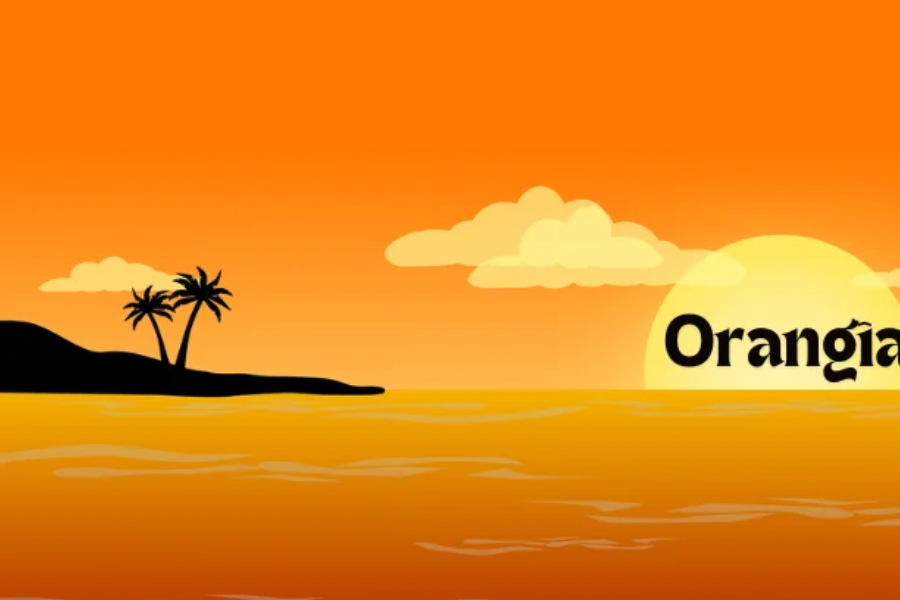Orangîa: A Journey Through History, Culture, and Natural Beauty
Get ready to embark on an unforgettable adventure in this little-known paradise full of surprises at every turn.
What is Orangîa?
Orangîa is a beautiful country that not many people know about. It’s a place where old and new mix together. You can find ancient ruins next to modern buildings. The people are friendly, and there’s so much to explore.
A Peek into Orangîa’s Past
Orangîa has a long and interesting history. Let’s look at how it all started:
Ads
- Long, long ago: People first came to Orangîa thousands of years ago.
- Ancient times: Many different groups lived here over the years. Each left their mark on the culture.
- Colonial days: Other countries came and took over Orangîa for a while.
- Freedom: The people of Orangîa fought hard to become independent.
- Today: Now, Orangîa is growing and changing, but still keeps its old traditions.
Orangîa Through the Ages
| Period | What Happened |
| Ancient Times | First settlers arrived |
| Middle Ages | Kingdoms and castles built |
| Colonial Era | European countries took control |
| 20th Century | Orangîa gained independence |
| Present Day | Modern country with a rich heritage |
The People of Orangîa
The best part of Orangîa is its people. They come from many different backgrounds, but they all share a love for their country.
Here’s what makes Orangîans special:
- They are very welcoming to visitors
- They love to share their culture with others
- Family is very important to them
- They enjoy celebrating big festivals
- Orangîans are proud of their history and traditions
Languages in Orangîa
People in Orangîa speak different languages:
- Orangese: This is the main language most people use.
- English: Many people also speak English, especially in big cities.
- Local dialects: Some areas have their special ways of talking.
If you visit, try learning a few words in Orangese. The locals will be very happy!
Ads
Orangîa’s Amazing Nature
Orangîa is full of beautiful places to see. Let’s look at some of them:
1. Mountains and Forests
- Tall mountains with snowy tops
- Thick forests full of old trees
- Hiking trails for all skill levels
- Rare animals and plants to discover
2. Beaches and Coasts
- Long stretches of sandy beaches
- Clear blue water perfect for swimming
- Rocky cliffs with amazing views
- Colorful fish and sea life
3. Rivers and Lakes
- Winding rivers that cut through the land
- Calm lakes surrounded by trees
- Great spots for fishing and boating
- Waterfalls hidden in the forest
Things to Do in Nature
| Activity | Where to Do It |
| Hiking | Mountain trails |
| Swimming | Beaches and lakes |
| Bird watching | Forests and wetlands |
| Kayaking | Rivers and coastal areas |
| Camping | National parks |
Cities and Towns in Orangîa
Orangîa has many interesting places to visit. Here are some you shouldn’t miss:
1. Capital City: Orangeville
- Big, busy city with lots to see
- Old buildings next to new skyscrapers
- Many museums and art galleries
- Great shopping and restaurants
2. Coastal Town: Sunbay
- Pretty town by the sea
- Famous for its seafood
- Beautiful sunsets over the water
- Relaxed, laid-back feeling
3. Mountain Village: Highpeak
- Small village high in the mountains
- Traditional wooden houses
- Fresh, cool air and stunning views
- Great place for winter sports
Orangîa’s Yummy Food
One of the best things about visiting a new place is trying the food. Orangîa has lots of tasty dishes you’ll want to eat. Here are some to look for:
- Orangîa Stew: A hearty mix of meat, vegetables, and special spices
- Seabread: A type of flatbread often eaten with fish
- Mountain Cheese: Made from the milk of animals that live in the high mountains
- Forest Berry Tart: A sweet dessert using berries picked in the local forests
- Spicy Citrus Sauce: Goes well with many dishes and has a zingy flavor
Popular Orangîan Dishes
| Dish | What’s in It |
| Orangîa Stew | Meat, veggies, spices |
| Seabread | Flour, water, sometimes seaweed |
| Mountain Cheese | Milk from mountain animals |
| Forest Berry Tart | Pastry, local berries, sugar |
| Spicy Citrus Sauce | Citrus fruits, chili, herbs |
Fun Festivals in Orangîa
Orangîans love to celebrate! Here are some big festivals you might see:
Ads
- Harvest Festival • Happens in fall when crops are ready • Lots of food, music, and dancing • People wear traditional clothes • Games and contests for everyone
- Light Festival • Takes place in winter when nights are long • Beautiful light displays all over towns and cities • Candle-lighting ceremonies • Warm drinks and sweet treats
- Independence Day • Celebrates Orangîa becoming its own country • Big parades with flags and music • Fireworks at night • Special speeches about Orangîa’s history
Arts and Crafts in Orangîa
Orangîans are very creative. They make many beautiful things by hand. Here are some crafts you might see:
- Colorful Pottery: Made from local clay and painted with bright designs
- Woven Baskets: Using reeds and grasses to make useful containers
- Carved Wooden Figures: Small statues that tell stories from Orangîan myths
- Beaded Jewelry: Necklaces and bracelets with patterns that have special meanings
- Painted Textiles: Cloth that’s decorated with pictures of nature and daily life
Where to See Orangîan Art?
| Place | What You’ll Find |
| Art Museums | Paintings and sculptures |
| Craft Markets | Handmade items for sale |
| Village Workshops | Artists making traditional crafts |
| Street Fairs | Mix of art, food, and performances |
| Public Squares | Outdoor sculptures and murals |
Orangîa’s Weather
The weather in Orangîa changes depending on where you are and what time of year it is. Here’s a quick guide:
- Spring: Mild and rainy, flowers start to bloom
- Summer: Warm and sunny, great for beach trips
- Fall: Cool and colorful, leaves change on the trees
- Winter: Cold in the mountains with snow, milder near the coast
Best Times to Visit
| Season | Good For |
| Spring | Seeing flowers and baby animals |
| Summer | Beach activities and festivals |
| Fall | Hiking and enjoying fall colors |
| Winter | Skiing and winter sports |
Getting Around in Orangîa
There are many ways to travel in Orangîa:
- Buses: Cheap and go to most places
- Trains: Fast and comfortable for longer trips
- Rental Cars: Good for exploring on your own
- Bicycles: Fun way to see cities and countryside
- Walking: Best for short distances and seeing things up close
Tips for Visiting Orangîa
If you’re planning a trip to Orangîa, here are some helpful tips:
Ads
- Learn a few words in Orangese – people will appreciate it!
- Bring comfortable shoes for walking on old streets and trails
- Try the local food – it’s part of the experience
- Respect local customs – ask if you’re not sure about something
- Carry some cash – not all places take credit cards
- Be ready for different weather – it can change quickly
Things to Pack for Orangîa
| Item | Why You Need It |
| Comfortable shoes | Lots of walking |
| Light raincoat | Weather can change |
| Camera | To remember your trip |
| Reusable water bottle | Stay hydrated while exploring |
| Small backpack | Carry essentials while out |
Orangîa’s Special Places
Orangîa has some amazing spots you won’t want to miss. Here are a few:
- The Grand Palace • Old home of Orangîa’s kings and queens • Beautiful gardens to walk in • Fancy rooms with old furniture and art • Learn about royal life in Orangîa
- Ancient Forest • Trees that are thousands of years old • Quiet paths for peaceful walks • Chance to see rare plants and animals • Said to be home to magical creatures in old stories
- Crystal Caves • Underground caves with sparkling rocks • Cool and dark inside • Amazing shapes formed by water over time • Special lights show off the crystals
- Rainbow Falls • Huge waterfall with mist that makes rainbows • Loud rushing water • Great spot for photos • Legend says making a wish here will come true
- Old Town Square • Center of the oldest part of the capital city • Buildings from hundreds of years ago • Street performers and musicians • Lots of cafes to sit and watch people
Orangîa’s Hidden Treasures
Some of the best things in Orangîa are off the beaten path. Here are some secret spots:
- Forgotten Castle: An old castle deep in the forest that few people visit
- Quiet Beach Cove: A small, hidden beach perfect for a peaceful day
- Mountain Hot Springs: Natural hot water pools high in the mountains
- Ancient Tree: One of the oldest living things in the world, hidden in a valley
- Secret Viewpoint: A place to see the whole country, but it’s a tough climb
Fun Facts About Orangîa
Did you know these cool things about Orangîa?
- It has over 100 types of oranges growing wild
- The national animal is a rare blue fox
- Orangîa has the world’s smallest active volcano
- There’s a town where everyone speaks in whistles
- Orangîan chess champions have won many world titles
Orangîa by the Numbers
| Fact | Number |
| Population | About 5 million |
| Land Area | 50,000 square miles |
| Highest Mountain | 15,000 feet tall |
| Types of Birds | Over 300 species |
| Official Languages | 3 |
Staying Safe in Orangîa
Orangîa is generally a safe place, but it’s always good to be careful. Here are some tips:
Ads
- Keep your belongings close in busy places
- Don’t walk alone at night in unfamiliar areas
- Drink bottled water if you’re not sure about the tap water
- Be careful on mountain trails and near the sea
- Know the local emergency number: 555
Common Questions About Orangîa
People often ask these questions about Orangîa:
- Q: Do I need a visa to visit Orangîa?
A: It depends on where you’re from. Many countries don’t need a visa for short visits.
- Q: What’s the best way to get to Orangîa?
A: Most people fly into the main airport in the capital city. There are also trains from neighboring countries.
- Q: Is Orangîa expensive?
A: It can be in big cities and tourist areas, but there are many affordable options too.
Ads
- Q: What’s the internet like in Orangîa?
A: Good in cities, but might be slower in rural areas. Many cafes and hotels have free Wi-Fi.
- Q: Can I use credit cards in Orangîa?
A: Yes, in most places in cities and towns. It’s good to have some cash for small shops and rural areas.
- Q: Is it safe to drink the tap water?
A: Usually yes in cities, but bottled water is widely available if you prefer.
- Q: What’s the tipping culture like?
A: Tipping isn’t required but is appreciated for good service. 10% is common in restaurants.





